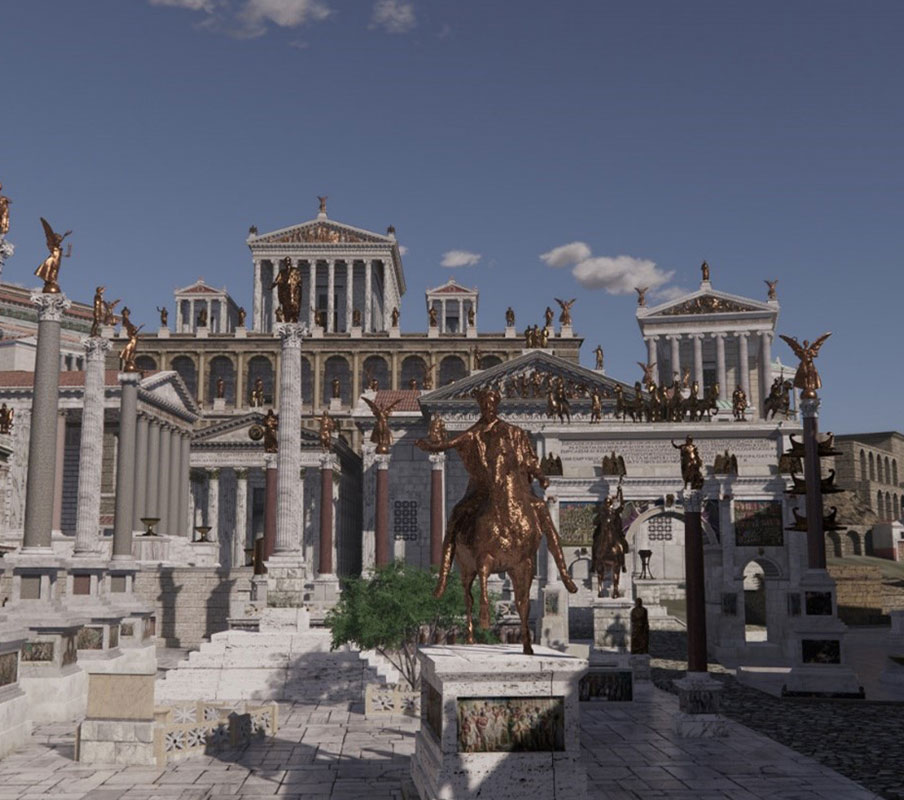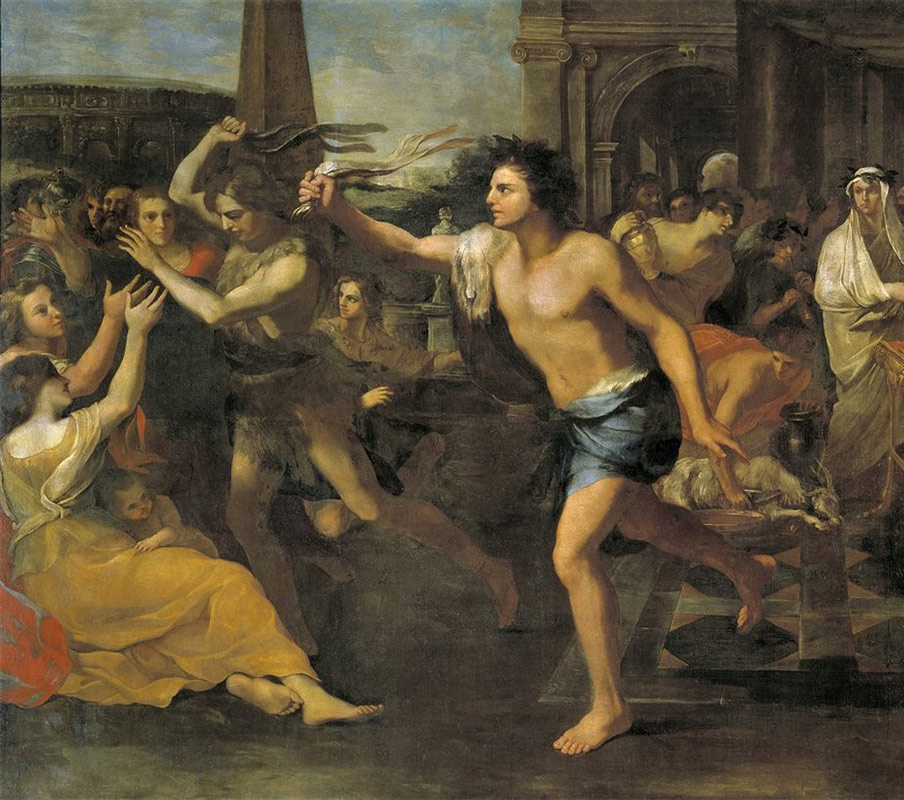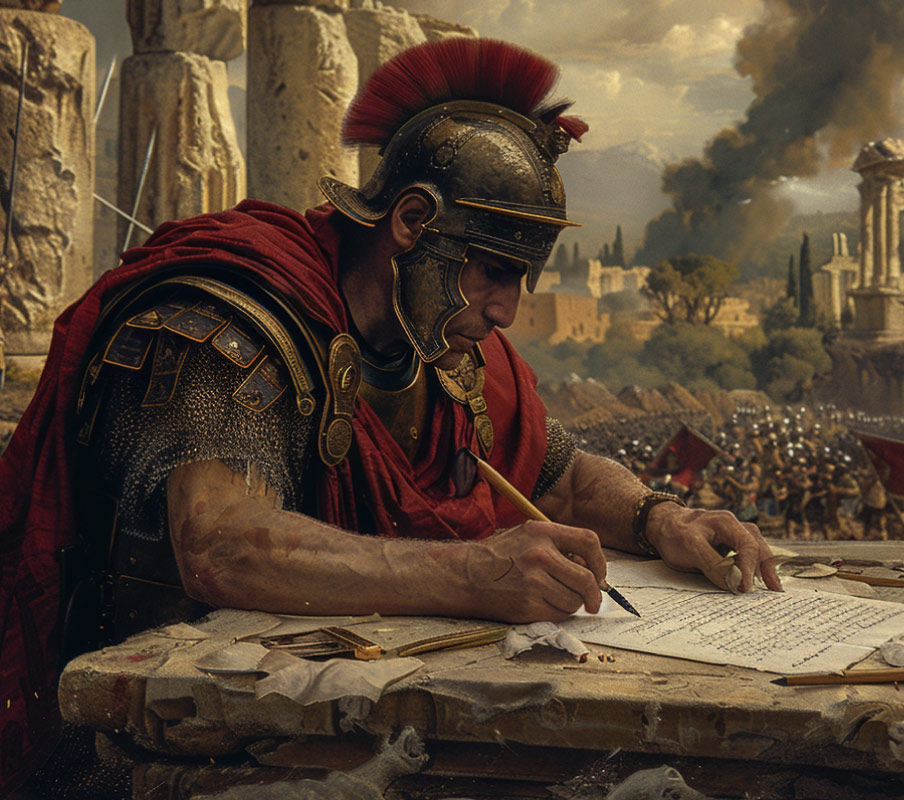
3rd Century Rome: the perfect stage for a story about Love, Power, and Faith Love and War
A Century of Anarchy
After the Roman Empire reached its peak in the 2nd century, the barbarian pressure on the borders and the plague of the end of the century cast a shadow on the future. The 3rd century is tumultuous, especially the period between 235 and 284 AD, recalled as « military anarchy ». This is the setting for « The Legend of Valentine », which takes place in 268 AD.
During these years the imperial seat is as unstable as ever. In almost fifty years more than 20 emperors succeeded, some of them being in power for only a handful of months. The senate loses even more power, while the political power is held hostage by the military, as the army and the praetorian guard raise and overthrow emperors.
In such a time of turmoil, the central power struggles to maintain control over the enormous territory of the empire. Ambitious individuals take advantage of the state’s weakness to seize control of entire provinces that become detached from the empire. It’s the case of the Gallic Empire, an independent political entity formed by the provinces of Gaul and adjacent areas ruled by the Roman general Postumus from 260 to 274 AD. Or the Palmyrene Empire, a kingdom that rules over the provinces of Syria, Arabia, Egypt and part of Asia Minor, with Queen Zenobia as its leader. These kingdoms don’t seek independence for ethnic reasons but rather emerged due to a weak central power that could not establish stable governance over its territory or provide protection from external threats.
Barbarians at the Borders
During the 3rd century, the raids from the barbarians in the empire multiply. In the North-West, the Germanic tribes of Goths, Heruli and other people become more and more aggressive. Even Italy isn’t safe anymore and the legions have a hard time containing the invasions. Then, in 251 AD, the unthinkable happens: Emperor Decius is killed in the battle of Abrittus against the Goths, becoming the first emperor to die in battle against a foreign enemy.
But the troubles affect not only the Northern borders; in the East the Sasanian Empire poses a continuous threat. After several Persian incursions into the Roman Empire, Emperor Valerian gathers the army to confront them on the battlefield. In 260 AD, the armies of the two empires clash in the battle of Edessa. Something terrible happens, even worse than the unprecedented death of Decius. The Roman army is defeated and captured, along with the emperor. It has never happened before that a Roman emperor is taken hostage by the enemy. Valerian will never come back to Rome and spend the rest of his life as a prisoner in Persia. His son, Emperor Gallienus, takes over the throne and is ruling the empire when our story begins.
Persecutions against Christians
The ongoing political and military turmoil is deeply impacting society, leading to increased feelings of insecurity. In an effort to restore unity, the emperors seek to rally their people around shared values, placing particular emphasis on religion. There’s no room for ambiguity: everyone is expected to demonstrate unwavering loyalty to the empire by honouring the traditional gods, who are believed to safeguard Rome’s prosperity and security.
For Christians, a time of trouble and pain begins. Even if intolerance and sporadic violence existed already in the previous centuries, it’s in the 3rd century that the persecutions reach their peak. The first systematic persecution happens under Decius in 250 AD when a law mandates that every citizen in the empire make sacrifices to the gods and the emperor. The edict introduces a new practice in the Roman tradition by establishing authorities to oversee the ritual and issue certificates to the attendees.
In 257 and 258 AD, Emperor Valerian orders all Christians to publicly renounce their faith and expels from the Senate those who declared themselves as such. Those who refuse to obey face confiscation of property and death by decapitation. During these years, also the pope in Rome and bishops in Spain and Africa were killed.
Divided Souls
Sacrificing to the pagan gods holds a strong political meaning as it demonstrates loyalty to the government. Yet, for Christians, it means rejecting the Christian God.
The suffering of the believers is worsened by the accusation of being enemies of Rome. At the time, the Christian faith is portrayed by pagans as a superstitio, a foolish and extremist belief that threatens the empire. However, most Christians are loyal Roman citizens who respect the emperor and are part of Roman culture. Suffice it to know that at the beginning there are no special garments for priests, who celebrate mass wearing the toga, just like pagan priests.
What to do? Christians have to choose between life or faith, obey the law or remain true to their belief. An internal conflict that affects also Valentine.
The fight of a man for faith and love
The 3rd century is a time of political, military, social and religious upheavals that would challenge everyone, even a man remembered as a saint.
Saint Valentine is a figure shrouded in mystery; historical records about him are sparse and often contradictory, making it hard to pinpoint exactly when he lived or what events shaped his life. « The Legend of Valentine » takes advantage of the gaps in the sources, weaving a fictional narrative that reflects the challenges faced by people in that turbulent era.
In the novel, Valentine is a brave and loyal soldier of the Roman army, a pagan man who is forced to confront his beliefs after reuniting with an old love, a Christian woman. As enemies threaten the empire both from outside and inside, Valentine must fight for his life and protect what he cares about the most. His journey towards a new life becomes even more difficult due to the rise of power of a man seeking revenge against him, endangering everything Valentine has ever loved and forcing him to question his values and beliefs.
Let’s Start The Adventure
SUBSCRIBE TO MY NEWSLETTER AND RECEIVE EXCLUSIVE UPDATES ON MY LATEST WORKS



